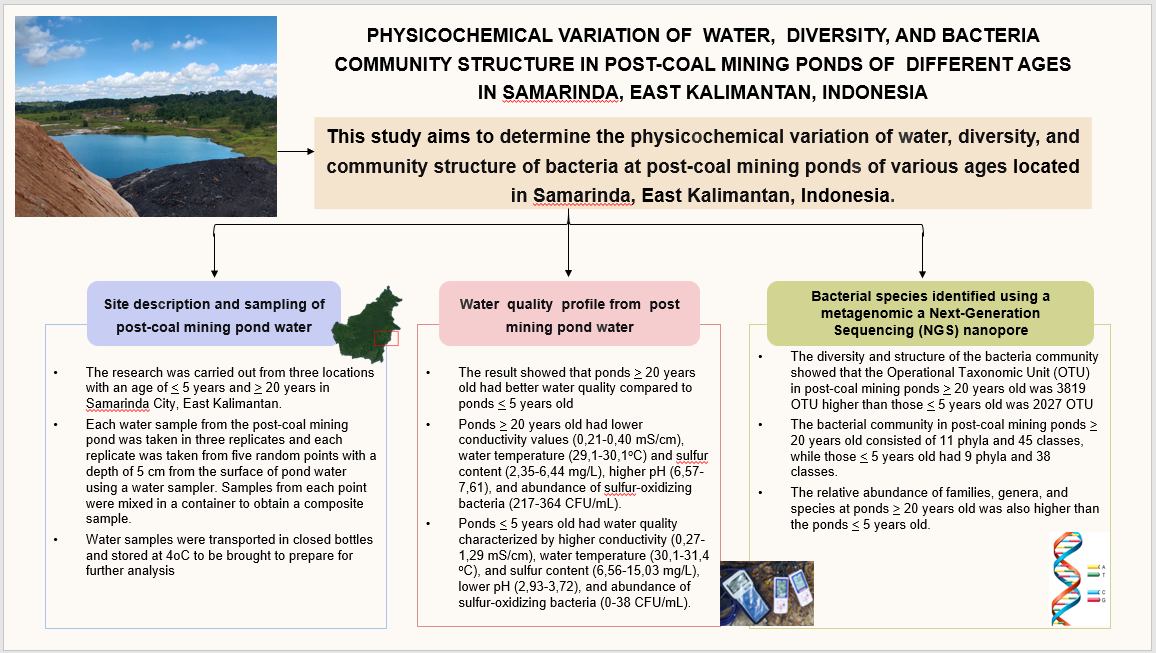
This study aims to determine physicochemical variation of water, diversity, and community structure of bacteria at post-coal mining ponds of various ages located in Samarinda, East Kalimantan, Indonesia. Bacteria species were identified using a metagenomic approach on the Next-Generation Sequencing (NGS) nanopore platform and analyzed using the QIIME2 pipeline. The result showed that ponds aged > 20 years old had better water quality compared to others < 5 years old. In addition, ponds > 20 years old had lower conductivity values (0,21-0,40 mS/cm), water temperature (29,1-30,1oC), and sulfur content (2,35-6,44 mg/L), as well as higher pH (6,57-7,61) and abundance of sulfur-oxidizing bacteria (SOB) (217-364 CFU/mL). Based on the results, ponds < 5 years old had water quality characterized by higher conductivity (0,27-1,29 mS/cm), water temperature (30,1-31,4 oC), and sulfur content (6,56-15,03 mg/L), lower pH (2,93-3,72), and abundance of SOB (0-38 CFU/mL). Diversity and structure of bacteria community showed that the Operational Taxonomic Unit (OTU) in post-coal mining ponds > 20 years old was 3819 compared to 2027 in those < 5 years old. Bacteria community in post-coal mining ponds > 20 years old consisted of 11 phyla and 45 classes, while those < 5 years old had 9 phyla and 38 classes. Moreover, the relative abundance of families, genera, and species at ponds > 20 years old was also higher. The high water quality, diversity, and community structure of bacteria at ponds > 20 years old showed the successful remediation of ponds water by SOB.
Total file downloads: 26